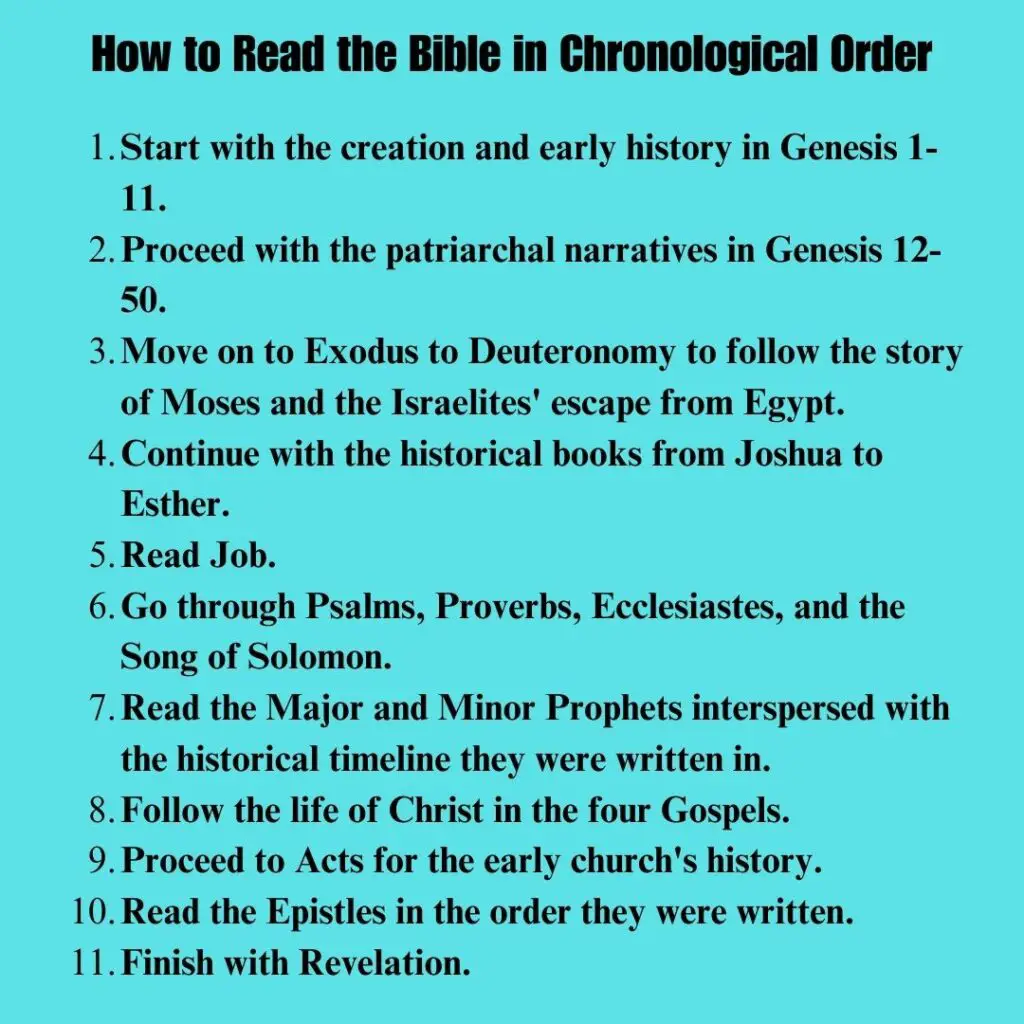The Bible is a profound and complex book, filled with a wealth of wisdom and knowledge about history, faith, and humanity. Reading it chronologically can provide unique insights and a better understanding of the events that took place. This article will guide you on how to read the Bible in chronological order, effectively enhancing your Biblical exploration.
Understanding the Structure of the Bible
Before we delve into how to read the Bible chronologically, it’s essential to understand its structure. The Bible is divided into two main sections: the Old Testament, covering creation, the early history of humanity, and the establishment of the Israelite nation, and the New Testament, detailing the life, teachings, death, and resurrection of Jesus Christ.
Although the Bible’s books are ordered traditionally, this arrangement doesn’t follow the exact chronological sequence of the events they depict. Therefore, reading the Bible in its canonical order may sometimes feel like you are jumping back and forth in time. Reading the Bible chronologically can offer a more cohesive and linear perspective.
Benefits of Reading the Bible in Chronological Order
Reading the Bible in chronological order has several benefits:
- Improved comprehension: Understanding the historical sequence helps in grasping the context and the reasons why certain events happened.
- Enhanced connection of stories: It provides a clear picture of how different events and narratives interconnect across different books.
- Better appreciation of prophetic books: The prophetic books can make more sense when read in the context of the historical events they reference.
A Basic Chronological Order of the Bible
Now, let’s dive into how to read the Bible in chronological order. Here is a basic order you can follow:
- Start with the creation and early history in Genesis 1-11.
- Proceed with the patriarchal narratives in Genesis 12-50.
- Move on to Exodus to Deuteronomy to follow the story of Moses and the Israelites’ escape from Egypt.
- Continue with the historical books from Joshua to Esther.
- Read Job.
- Go through Psalms, Proverbs, Ecclesiastes, and the Song of Solomon.
- Read the Major and Minor Prophets interspersed with the historical timeline they were written in.
- Follow the life of Christ in the four Gospels.
- Proceed to Acts for the early church’s history.
- Read the Epistles in the order they were written.
- Finish with Revelation.
Utilizing Chronological Bibles and Reading Plans
To simplify the process, consider using a chronological Bible. These Bibles have rearranged the text into a timeline that aligns with historical events. Another option is to use a chronological Bible reading plan, which you can find online or in Bible study apps.
Tips for Reading the Bible in Chronological Order
Finally, here are a few tips for reading the Bible in chronological order:
- Patience: The Bible is a large and complex book, so don’t rush the process. Take your time to digest and understand the text.
- Consistency: Make Bible reading part of your daily routine.
- Seek clarification: If something is unclear, seek answers from trusted sources.
- Prayer and meditation: Use prayer and meditation to reflect on what you’ve read and ask for understanding.
Conclusion
Reading the Bible in chronological order can offer a fresh perspective on its age-old wisdom. With consistency, patience, and openness, you can deepen your understanding and appreciation of this sacred text. Start your journey today to explore the historical and spiritual treasures that await.

Author

Alona Smith is a devoted follower of Jesus Christ who believes that life’s true purpose is found in knowing Him and making Him known. She is passionate about sharing God’s Word with clarity and compassion, helping others see the beauty of the gospel of grace revealed through the Apostle Paul.
Grounded in Scripture and led by the Spirit, Alona seeks to live out her faith in practical ways—showing kindness, extending forgiveness, and walking in love. Whether serving in her local church, encouraging a friend in need, or simply living as a light in her community, she strives to reflect Christ in both word and deed.




